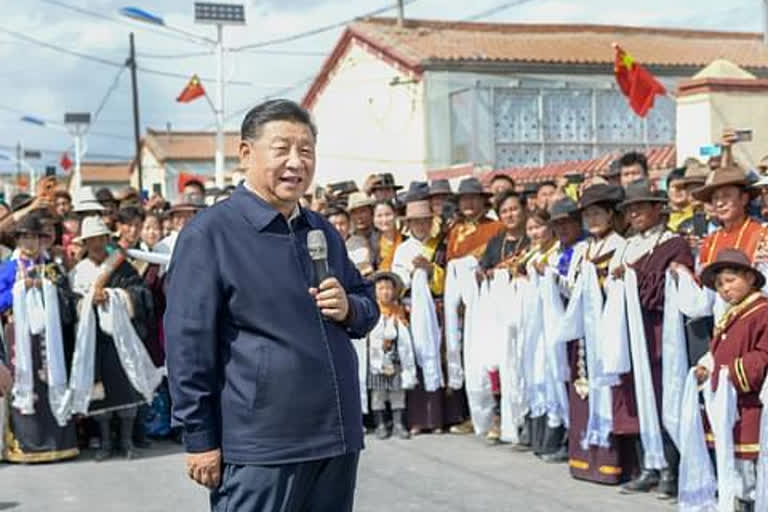New Delhi: Seventy years after the “peaceful liberation” of Tibet by Mao Tse Tung-led China, on Thursday, China’s President and chairman of the Central Military Commission Xi Jinping appeared in Lhasa with the Potala Palace, the Dalai Lama’s official residence, looming large in the backdrop. It was his first visit to the Tibetan capital in a decade.
Just the day before on Wednesday, President Xi had flown to Tibet’s border city of Nyingchi and landed at the Mainling airport, a few km away from Tuting, just across the border in India’s Arunachal Pradesh.
The sudden three-day-long visit to Nyingchi and Lhasa accomplished several objectives—political and military—that India should view with concern.
First, a trip to the border prefecture of Nyingchi amid an ongoing intense military standoff between the Indian Army and China’s People’s Liberation Army (PLA) along many parts of the Line of Actual Control (LAC) is depictive of the obstinate and bellicose position of the Chinese.
While Nyingchi has evolved over the years as an important military station equipped with a dual-use airport, China lays claim of territorial suzerainty to a swath of area south of Nyingchi comprising most of Arunachal Pradesh that China refers to as part of its ‘Southern Tibet’.
The Nyingchi trip is interesting in the backdrop of recent reports that China has been exhorting and organizing locals in the region to set up militias and even join the PLA to become the ‘eyes and ears’ in guarding the border with India.
Second, by undertaking a trip to project sites on the Yarlung Tsangpo river, which flows as the Brahmaputra in India, Xi indicated that efforts to harness the river will continue despite opposition by India and Bangladesh on the basis of riparian rights.
In December 2020, a government white paper named “Energy in China’s New Era” had said: “Focusing on major rivers in the south-west, China is building large hydropower bases and controlling the construction of small and medium-sized hydropower stations in the basin areas.”
